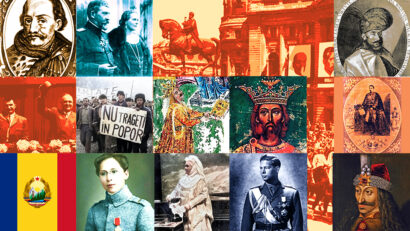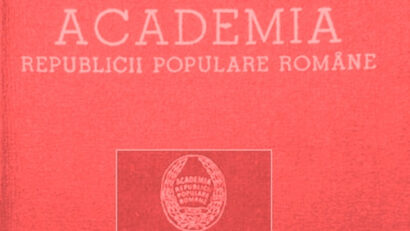Greater Romania and the sacrifice it required
In 2022, the centennial of the Coronation is also the centennial of the Triumphal Arch

Steliu Lambru, 14.11.2022, 13:01
On October 16, 1922, after
the grand ceremony in which King Ferdinand I and Queen Marie were crowned as
sovereigns of Greater Romania in the Alba Iulia Cathedral, the Triumphal Arch
was also inaugurated. The royal procession, with representatives of European
countries, military units and floats paraded under it at the time. In 2022, the
centennial of the Coronation is also the centennial of the Triumphal Arch, the
first permanent monument of this kind in Romania.
Public monuments
rooted in ancient Roman architecture, triumphal arches were built in Bucharest just
like elsewhere in the world, to commemorate war victories or significant public
events. The previous such monumental structures in the Romanian capital city
had only been temporary, and had been built in 1848, 1859, 1878, 1906 and 1918 to
celebrate glorious events: the 1948 revolution, the union of the Romanian
Principalities, Romania’s independence, 40 years of rule for King Carol I, the
victory in World War I.
The triumphal arch
under which King Ferdinand I and Queen Marie passed on their return to their
capital as sovereigns of the Greater Kingdom of Romania was built in 1922, and
made of wood. But this was also when a decision was made to build a stone arch.
The current Arch is a 27m tall structure designed by the Romanian architect Petre
Antonescu and inaugurated in 1936.
A commemoration held this
year to mark the events that took place 100 years ago included an exhibition
paying tribute to the Romanian soldiers that fought in World War I. The items
on display within the Arch mainly consisted of letters sent home by soldiers
and received by them from families and friends.
Emotion and poetry
are the best words to describe these documents. Moreover, even when all the
authors of such letters understood the political reasons behind the war, they
still regarded it as absurd.
We asked Titus Bazac,
inspector with the Bucharest City Hall’s Directorate General for Architecture,
Landscaping and Public Monuments, about the highlights of this exhibition.
Titus Bazac:Inside the two piers of the Arch
there are two halls. In both of them as well as on the two landings, there are
several dioramas. In one of the piers, there is a replica of a peasant home
interior, where a mother is crying while knitting socks for her son and
wondering why he had to go to battle. She is wondering whether this suspension
of the natural cycle of life, with her son going away from home, was in any way
sensible. Then we have another interior, it may be either a rural or urban
house, with a lamp on a table and a mother asking why she had to go through
this ordeal, battling her decision to allow her son to go to war, a dramatic
scene altogether.
The walls of the Arch
are covered in collages of photographs and facsimiles of archive letters. Mother
is sick with worry about your fate, a soldier’s sister writes. My love, the
kid and I are missing you and waiting for you to come home, an officer’s wife
says. My son, be a man, do your duty and come back in one piece, a father
writes to a soldier.
In the attic,
visitors go under a huge roll of paper spread over the ceiling, coming up from
one pier and carrying on down on the other pier. Titus Bazac also gave us
details about what the exhibition includes in the second pier:
Titus Bazac:On the way down on the second pier we
have a diorama of a trench where a soldier is simply devastated by the
situation the war faced him with. Another soldier is trying to write a few
words to his family but cannot decide how his letter should begin. And the last
scene, a little chilling, is a grave. We can see on a monitor a firing squad, a
symbol of the cruelty with which all WWI soldiers had to struggle. It is also
relevant for an episode in writer Liviu Rebreanu’s works: the Romanian soldier
forced to fight against other Romanians. He eventually switches sides, but is
caught and executed. This is the most emotional moment of this exhibition.
The coronation of
King Ferdinand I and Queen Marie as sovereigns of Greater Romania in 1922 would
not have been possible without the sacrifice of the entire Romanian society. And the Triumphal Arch, the most powerful material
testimony to those times, reminds us of those sacrifices to this day. (AMP)




























